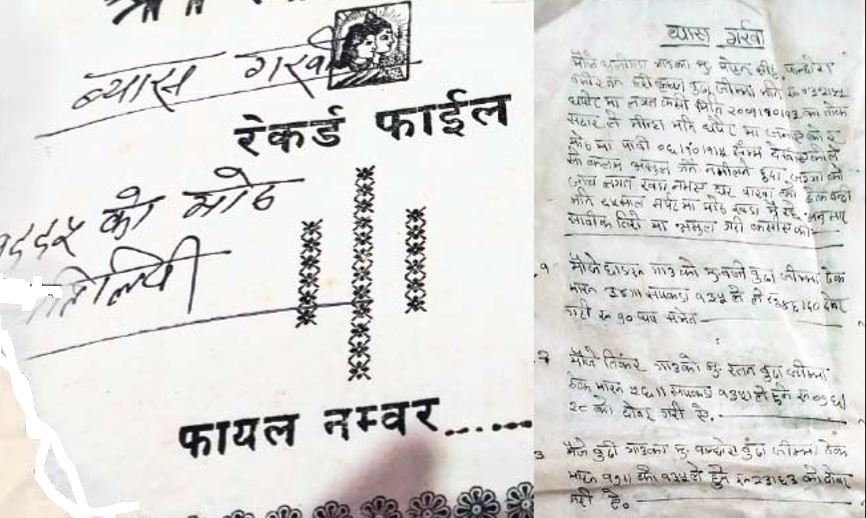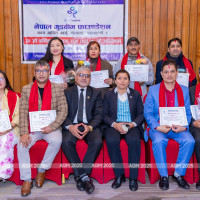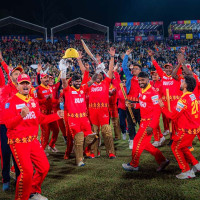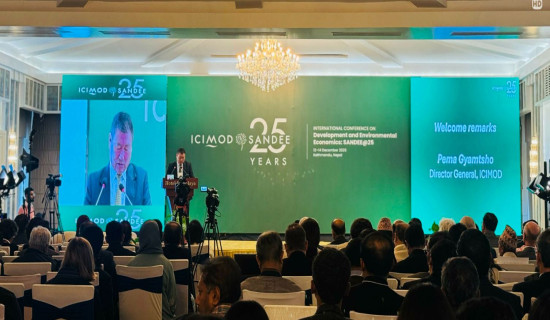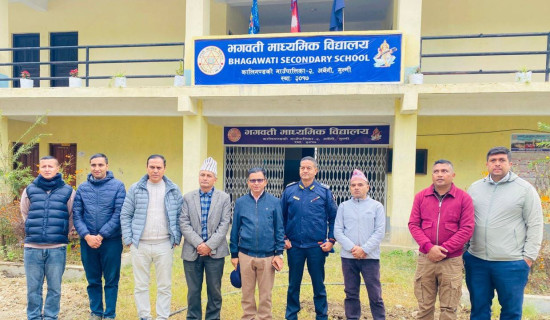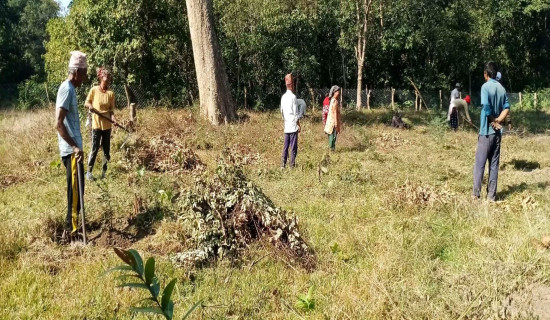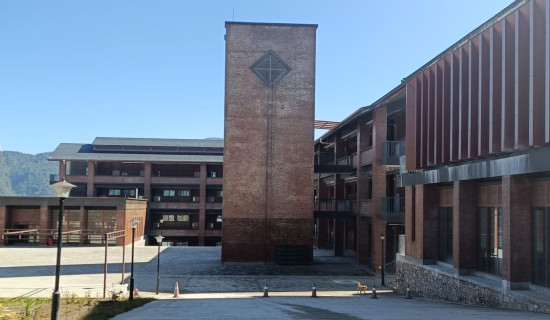- Sunday, 14 December 2025
Irrefutable evidences show Lipulek is Nepali territory: Experts
BY A STAFF REPROTER,Kathmandu, Sept. 4: Nepal has reaffirmed its sovereignty over the Lipulek, Limpiyadhura, and Kalapani territories, as Prime Minister KP Sharma Oli held dialogue with Chinese President Xi Jinping. Experts have welcomed the move and urged evidence-based, tripartite discussions to resolve the longstanding border dispute.
The issue was highlighted during an international seminar titled ‘A Milestone: 70 Years of Nepal-China Diplomatic Relations and PM Oli’s Visit to China’, organised by Friends on the Cloud in Kathmandu on Tuesday. Analysts stressed that the Lipulek issue is closely tied to Nepal’s national sovereignty and territorial integrity.
Dr. Bishnu Hari Nepal, former Nepali ambassador to Japan, discussed Nepal’s participation in the Shanghai Cooperation Organisation (SCO) Plus summit and noted that the Lipulek, Limpiyadhura, and Kalapani issue was raised in bilateral talks, establishing a potential milestone for Nepal-China relations. He said, “How the Lipulek issue progresses after bilateral dialogue is crucial. The Kali River has been shown on Nepal’s side since the 1827 map. Discussions occurred with China on the 1962 and 1988 border protocols. India’s old maps do not include Lipulek, and there is no documentary evidence from India. The 1950 treaty also supports Nepal’s claim.”
Dr. Nepal further urged the public release of a letter sent by former Indian Prime Minister Jawaharlal Nehru to King Mahendra Shah, stating, “The letter clarifies all issues and should also be shared with China.” He stressed strengthening SAARC, with participation of China, to support Asia’s century of development.
Mahesh Dahal, former Nepali ambassador to Australia, called for a long-term diplomatic solution to the Lipulek dispute, noting that collaboration with China is essential as Nepal navigates its development challenges and China advances toward becoming a leading global economy.
Dr. Bishnu Raj Upreti, Executive Chairman of the Policy Research Institute, urged China to enhance goodwill toward Nepal. “Kalapani is ours. There is irrefutable evidence. Nepal’s refusal to sit for talks with India stems from historical records, not hostility. Moving borders is wrong,” he stated.
Dr. Upreti emphasised that historical maps confirm Nepal’s claim over Lipulek, Limpiyadhura, and Kalapani. He warned that China should not support India in encroaching Nepalese territory and suggested revisiting agreements between China and India regarding Lipulek. “We must stand united on Kalapani, Limpiyadhura, and Lipulek. This is a matter of national sovereignty and territorial integrity. Nepal must seek solutions with both China and India,” he said.
Gopal Khanal, member of the UML Foreign Affairs Department, pointed out the significance of PM Oli’s presence at the SCO summit. “The Prime Minister raised issues faced by Himalayan and landlocked countries and ensured national interest was central in discussions,” he said. Khanal added that PM Oli specifically raised Nepal’s 370-square-kilometre territory, urging critics to engage in objective debate on the border issue. He also noted that Nepal clarified it will not participate in China’s Global Security Initiative.
Meanwhile, land records preserved at the Darchula District Land Revenue Office confirm that the Lipulek, Limpiyadhura, and Kalapani areas, along with Nabi, Kuti, and Gunji villages of Vyas Rural Municipality-1, belong to Nepal, despite Indian encroachment.
Laxmi Raj Bishta, Chief of the Darchula Land Revenue Office, stated that the village heads of those villages have maintained receipts of land tax payments at the office since 1978. These documents serve as evidence of Nepali ownership dating back decades.
According to Bishta, the old Moth (land registry) of Vyas Garkha from 1978 shows that Panchora Budha, the head of Kuti village, and Harikrishna Budha, the head of Gunji and Nabi villages, paid land taxes, and the complete registry was sent to the Land Reform and Management Department in Babarmal, Kathmandu on April 8, 2016 by former Land Revenue Officer Pradeep Singh Dhami. Following instructions from the department, records of villages including Changru, Tinker, Budi, Garbyang, Kuti, and Napalchu were dispatched. Currently, only copies of these records are retained at the Darchula office.
The village heads of Nabi, Kuti, and Gunji paid land taxes for 43 years, from 1938 until 1981, prior to formal land surveys, providing substantial proof of Nepalis’ land ownership. Bishta also informed that a census was conducted in these villages by then Statistics Officer Bhairav Risal in 1961.
Former Chief of the Darchula District Coordination Committee, Karbir Bahadur Karki, added that local residents participated in the first parliamentary general election in 1958. According to him, residents used to relocate seasonally to Dhuligada in Naugaad Rural Municipality and Sitolaar in Api Himal Rural Municipality headquarters for six months during winter. He also stated that land surveys in Darchula by cadastral survey teams began between 1981 and 1986. Land tax receipts from 1978 clearly indicate the villages’ registered land ownership.
Binod Singh Kunwar, Vice Chairman of Vyas Rural Municipality, emphasised that the Nepali territories of Lipulek, Limpiyadhura, and Kalapani will never be ceded. “The government must undertake strong diplomatic efforts to reclaim these areas,” he said. Kunwar also urged the government to allocate funds for the Tinker road, provide food supplies from Nepal for residents and security personnel of Chhangru and Tinker, develop access routes on Nepali land, and, if necessary, arrange helicopters for local transportation.
Similarly, Dilendra Prasad Badu, Member of Parliament from Darchula, called for resolving the longstanding Nepal-India border dispute through diplomatic channels. He stressed that all evidence confirms the territories belonged to Nepal and that foreign interference in Nepali land was unacceptable.

